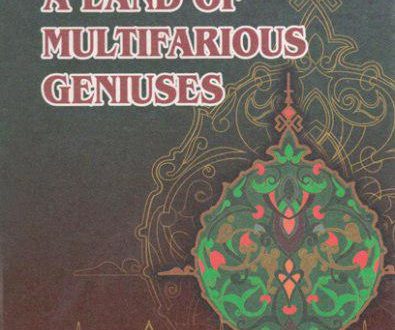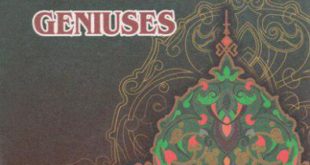One of the important peculiarities of the tafsir is in the fact that philological features of the ayahs and their analyses are carried out in detail and with a great mastership. The full essence of Qur’an and its main ideas are revealed masterfully. To reach this purpose the author had to cite and comment on the ideas promoted by the estimated scholars of his time as Imam Sibavayh and Imam Farra. In order that the reader of the Qur’an could fully understand the meaning of ayahs, an-Nasafi provided seven types of approaches to the principles of reading ayahs. It is perhaps because of this factor that this book is often addressed by the readers of Qur’an. While translating the Holy Qur’an into Uzbek, the translator Abdulaziz Mansur also used this book effectively.
The Aabic word “tafsir” is defined in dictionaries as a word meaning (pi. tafasir) “defining, clarifying, making clear, expressing, declaring”, etc. The scholars define the nature of this term differently and use it to denote different meanings. According to their vision, “tafsir’’ is used to denote “a science which expresses and describes the essence of the words of Allah” or “a science which reveals the meanings of the words and phrases used in the Holy Qur’an” or “a science which studies the purposes and aims of Allah expressed in the ayahs of the Holy Qur’an from the point of view of Man”.
Tafsirs played the most important role in understanding the ideas of the Holy Qur’an. In order to make the believers follow their ideas and teachings, different separated parties and groups in religion made many efforts to use tafsirs as a weapon in their fights for leadership in religion. In order to reach their aggressive purposes, they even tried to explain the essence of ayahs erroneously and with bias. They even did not stop before the incorrect explanations of tafsirs. Especially, in the fights of the Abbasids for the power of the Caliphate, incorrect and wrong descriptions and explanations of tafsirs were widely used as a main weapon by the Abbasids.
In the course of time lots of tafsirs were created by the scholars and it is perhaps, firstly, because of the attempts to explain the essence of ayahs for the ordinary people and, secondly, the growth of the number of tafsirs was dictated by the development of sciences. Alongside with the religious sciences, such branches of sciences of the secular world as philosophy, grammar, syntax and the like were greatly influenced by the essence of tafsirs.
As the scholars of Maveraunnahr were the supporters of the teachings and ideas of the Hanafian order, the tafsirs written by them fully met the requirements of this order. Among such tafsirs we can mention as most important ones the following works:
- “Ta’vilat as-Sunnah” by Abu Mansur al-Maturidi;
- “At-Tafsir” by Abu Is’haq Ibrahim ibn Ma’qil an-Nasafi
(died in 907-908); - “Tafsir al-Qur’an al-karim” by Abu Lays Nasr ibn Muhammad ibn Amad as-Samarqandi (died in 1002-03);
- “At-Tafsir” by Hujjat al-Afadil Ali ibn Muhammad al-Khoresmi (died in 1164-1165);
- “Fazail al-Qur’an” (Peculiarities of the Qur’an) by Abu-l-Abbas Ja’far ibn Muhammad al-Mustaghfiri an-Nasafi (died in 1041).
Alongside with those above-mentioned scholars, the list of authors who were engaged in compiling tafsirs and commenting on them may be continued with the following names:
- Abu Riza Muhammad ibn Ali an-Nasafi (died in 1123-24);
- Abu-l-Fadail Muhammad al-Hanafi Burhan an-Nasafi (died in 1287-88);
- Abu Sa’d Muhammad ibn Muhammad al-Amadi (died in 1574-75).
“Madarik at-tanzil va haqaiq at-tavil” by Abu-l-Barakat an-Nasafi is used as a manual on the subject of tafsir at the religious-educational centres of the Islamic world alongside with such known textbooks and manuals as “Tafsir al-Bayzavi”, “Tafsir al-Jalalayn” and “Tafsir ibn Kasir”.
Among these manuals, “Tafsir an-Nasafi” meets the requirements and supports the ideas and teachings of the Hanafian order whereas the rest are the tafsirs of the Shafi’ia order. Therefore, those students who wish to learn the essence of ayahs of the Holy Qur’an from the points of view of the Hanafian order should refer to “Tafsir an-Nasafi”. The last version of the book was published in Beirut in 1999 by the “Dar ibn Kasir” publishing house.
In the preface of his book, Abu-l-Barakat an-Nasafi wrote the following lines: “I was asked by my colleagues and close friends to write a book in a laconic and understandable style that could explain the essence of the ayahs of the Holy Qur’an mentioning different approaches to the rules of reading the Qur’an and showing all the acts and attitudes to the principles of reading Qur’an in accord with the claims of “ahli Sunnah va-l-jamaa”. At the beginning, I hesitated but at last, thanks to the mercifulness and support of Allah, I had the courage to write the book and soon I finished it. I titled my book as “Madarik at-tanzil va haqaiq at-ta’vil”. Allah is able to make things easy and the most powerful Creator who can do anything he wishes and is able to realize our wishes in prayers”.
As is mentioned by an Arabic scholar Muhammad az-Zahabi in his book “At-Tafsir va-l-mufassirun” the style of writing of “Tafsir an-Nasafi” resembles the style of “Anvar at-tanzil va asror at-ta’vil” (Rays of the Qur’an and the secrets of ta’vil) by Qazi al-Bayzavi and “Al-Kashshaf” (Discoverer) by a scholar Mahmud az-Zamakhshari, our countryman from Khoresm. However, al-Bayzavi represents the Shafi’i order and az-Zamakhshari supports the teachings of the Mu’tazilah trend in Islam. Therefore, there are lots of differences in the approaches to the claims of those orders and in the principles of explanations of the meanings of ayahs of the Holy Qur’an.
 Imom Buxoriy xalqaro ilmiy-tadqiqot markazi bukhari.uz
Imom Buxoriy xalqaro ilmiy-tadqiqot markazi bukhari.uz











